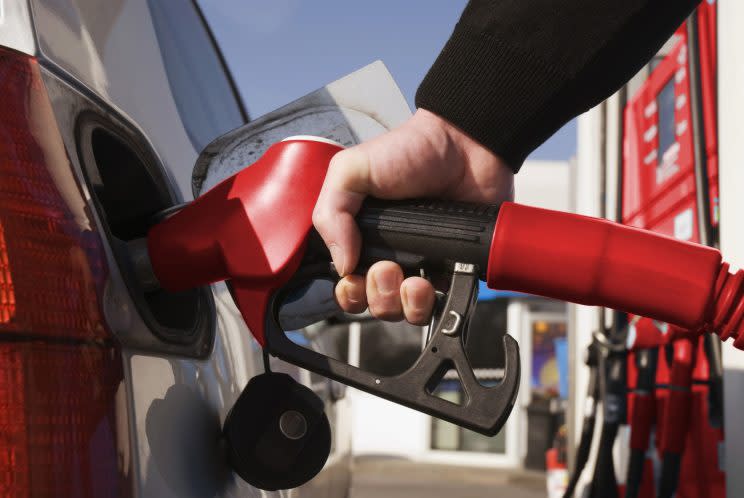AAA says gas prices will continue to rise until June
Springtime brings April showers, blooming flowers, and unfortunately, higher gas prices.
According to AAA, 43 states and Washington, DC, have seen prices at the pump increase over the past week. The national average is $2.42 a gallon, which reflects an increase of 13 cents in the last month, and 30 cents (or around 14%) compared to last year.
Indiana and Texas have seen the biggest jump in prices, with gas rising 18 cents a gallon in just one month. Gas rose by 17 cents in Michigan and Kentucky.
Drivers are used to higher gas prices in the summer, but local news stories around the country are conveying some confusion with the recent spike. As it turns out, a bump in gas prices is actually typical around this time of year, as oil refineries switch over from their winter blend to the summer blend.
“The winter blend has a higher reid vapor pressure (RVP) and is cheaper to produce,” said Tamra Johnson, AAA spokesperson. “The West Coast made the switch in late February and early March. The Northwest wrapped up their maintenance around April 10, so now the refineries are pushing out the lower RVP gas, and the prices are reflecting that.”
The United States currently has an oversupply of gas, and as the weather warms up, demand will likely rise in June, sapping up supply and pushing prices up. AAA expects the national average for gas to peak at around $2.70 a gallon in June. In 2016, summer gas prices peaked at an average of $2.38 a gallon.
Johnson says that a handful of states will even see gas prices over $3 a gallon this summer, especially on the West Coast. In fact, two states already hit that benchmark this week: Hawaii ($3.06) and California ($3.01). The cheapest gas in the nation can currently be found in South Carolina ($2.13).

Another factor that could impact gas prices this summer is the Organization of the Petroleum Exporting Countries (OPEC). In June, oil producers from several key nations will decide whether to extend a December agreement that cut oil output by 1.8 million barrels per day, helping to boost the price of crude oil. If they extend the agreement, it could mean higher prices at the pump. Although Fatih Birol, executive director International Energy Agency (IEA), says it’s unlikely.
“There is a tremendous amount of stock in the markets and to expect a major increase in the price is not very realistic,” Birol told Reuters, adding that downward price pressure will come from other producers.
For American travelers, even a slight bump at the pump might be reason to adjust travel plans. In a AAA survey, more than 60% of Americans say they will travel closer to home this summer if gas prices continue to rise above current levels.
AAA says that 42% of Americans say they plan to take a summer vacation, but a growing number say they will opt for domestic trips instead of international travel.
Brittany is a reporter at Yahoo Finance.
5 free apps to download before your road trip
This Northeast city is the worst place to own a car, new study says
